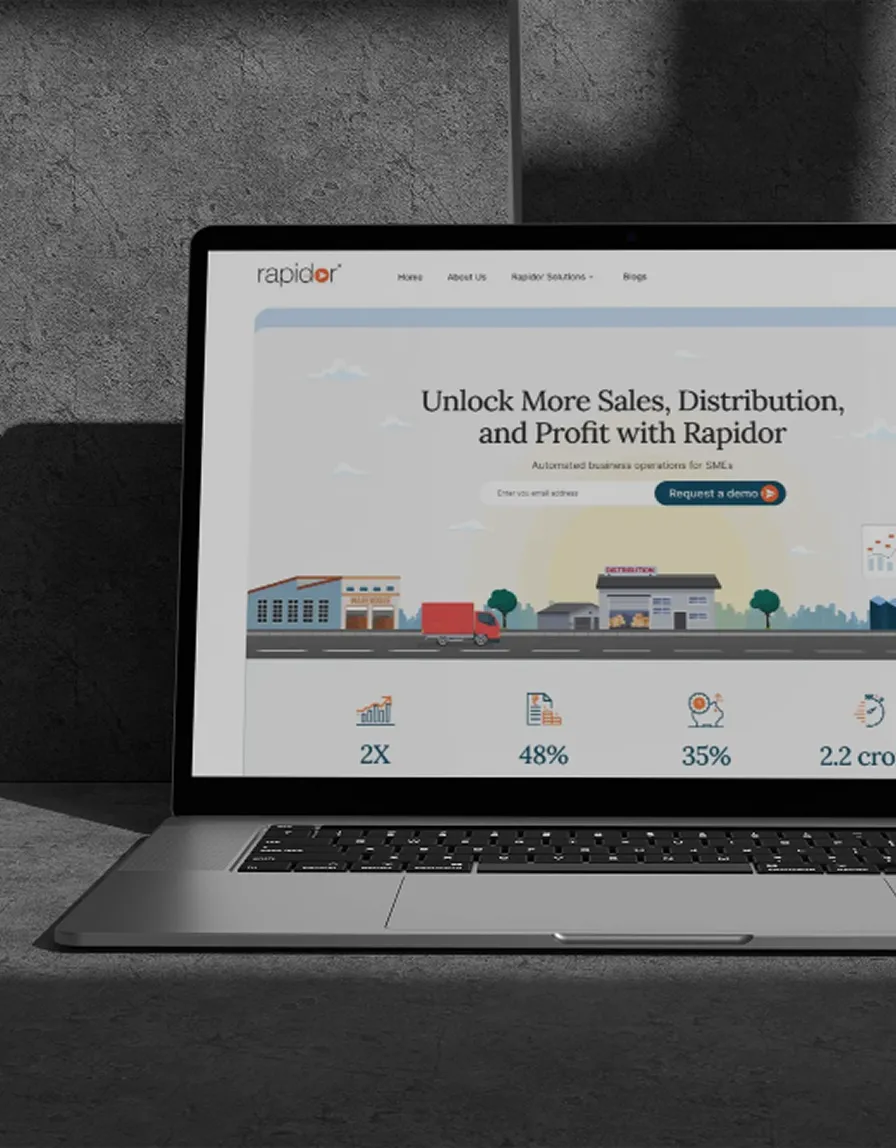The practice of law requires precision. The business of law demands distinction.












































































































































Digital presence that sells while they sleep
Positioning that makes price shopping impossible
Client acquisition without networking dinners
Profit margins that survive the AI revolution
Brochure websites that showcase everything but convert nothing
"Full-service expertise" positioning (just like everyone else)
Still believing relationships trump digital strategy
Leaking $$$$$$ annually through manual processes

While others worry about AI, you're building tech. But can you sell it?
Every forward-thinking legal firm is developing client-facing technology. You've got the expertise. What's missing is the go-to-market engine that makes it sell like the SaaS companies you're competing with.
That’s us.


Conduct 360° market audit: competitors, client personas, practice area potential
Map multi-stakeholder buying journeys (corporate counsel, individual clients, referral partners)
Establish ethical compliance guardrails for all marketing activities

ADA-compliant websites with practice-specific portals
Client education systems (FAQs → whitepapers → consultation
Automated intake flows with real-time validation

Local SEO domination for individual clients
Account-based marketing for corporate legal teams
Automated sequences for complex sells

Marketing <-> CRM <-> billing software integration
Lead scoring combining firmographic + behavioral data
Compliance-safe document automation

Weekly A/B testing cadence (CTAs, forms, content)
Quarterly market gap analysis using AI pattern recognition
Semi-annual tech stack health checks













Traditional networking relies on personal relationships with unpredictable outcomes, while digital marketing creates systematic client acquisition channels that work continuously.
The key differences:
· Digital establishes your expertise before the first conversation
· Traditional relies on reputation and word-of-mouth
· Digital creates measurable pipelines with predictable results
· Traditional often lacks attribution and clear ROI
Most successful firms implement what we call the "Digital Relationship System" – combining targeted digital presence with relationship nurturing automation, creating multiple pathways to new business while strengthening existing referral networks.
This challenge represents one of the most common issues we address for legal clients. Generic "full-service expertise" messaging causes even established firms to blend into the background.
Effective differentiation requires:
· Experience narrative (not just credentials)
· Outcome framing (not just practice descriptions)
· Audience specialization (not general legal services)
Our LEGAL Framework begins with comprehensive competitive analysis across multiple positioning dimensions to identify underserved market gaps. The most significant results typically come from repositioning around specific client scenarios rather than practice areas – creating a category of one where your firm becomes the definitive choice.
Rather than focusing on specific percentage returns, we measure success across multiple dimensions that matter to firm leadership:
· Consultation request growth
· Lead-to-client conversion improvement
· Client acquisition cost efficiency
· Client quality improvement
The most significant ROI comes from integrated systems rather than isolated tactics – combining practice-specific content, automated intake processes, and nurturing workflows that prevent leakage throughout the client journey.
The timeline to meaningful results typically follows three phases: initial engagement improvements (1-2 months), qualified lead growth (3-4 months), and significant practice area revenue impact (5-6 months).
Boutique and mid-sized firms can outperform larger competitors by implementing targeted strategies rather than broad-based spending.
The most effective approach focuses on:
· Dominating specific practice niches rather than competing across all services
· Leveraging practice-specific SEO to rank for highly targeted terms that signal client intent
· Implementing automated intake systems that capture and qualify leads continuously
· Developing content that demonstrates deep subject-matter expertise
Firms with 5-50 attorneys can effectively compete against AmLaw 200 firms in specific practice areas by focusing resources on targeted digital marketing rather than traditional brand advertising, achieving significantly higher engagement rates through precision targeting.
The most effective law firm marketing technology stack integrates five core components:
· Practice-specific website with conversion-optimized attorney profiles
· CRM customized for legal intake and matter management
· Marketing automation for prospect nurturing
· Analytics systems for attribution and performance tracking
· Content management tools for thought leadership distribution
Progressive firms create integrated ecosystems combining legal-specific and marketing-specific technologies rather than choosing between all-in-one legal practice platforms with limited marketing capabilities or generic marketing tools.
AI is transforming law firm marketing in four critical dimensions:
· Creating unprecedented competitive pressure as clients use AI to evaluate firms
· Enabling hyper-personalized client journeys through behavioral prediction
· Automating routine client communications while maintaining compliance
· Requiring new approaches to content strategy for generative search
Firms effectively navigating this shift typically implement:
· GEO (Generative Engine Optimization) to ensure visibility in AI-powered search
· Intelligent nurturing systems that detect subtle buying signals
· Automated but personalized follow-up sequences
· Content that balances depth with conversational accessibility
Rather than seeing AI as a threat, leading firms use it to enhance client experience—implementing virtual legal assistants, preliminary case evaluations, and predictive analytics that demonstrate expertise before the first consultation.
Beyond vanity metrics like website traffic or social media followers, successful law firms track revenue-driving KPIs:
· Cost per qualified consultation (segmented by practice area)
· Lead-to-retained client conversion rate by source
· Client acquisition cost by practice area compared to lifetime client value
· Marketing-influenced revenue (tracking which marketing touchpoints influenced closed business)
· Practice-specific pipeline velocity (how quickly leads move through your intake process)
Additionally, sophisticated firms monitor digital share of voice against competitors, prospect engagement depth, and attribution modeling that reveals the true impact of each marketing channel. This metrics framework directly ties marketing activities to business outcomes, helping managing partners justify investments.
While tactical campaigns may show initial results in 30-45 days, building a complete growth system typically follows this timeline:
· 1-2 months: Baseline improvements in engagement metrics and consultation requests
· 3-4 months: Measurable increases in qualified client acquisition
· 5-6 months: Significant impact on revenue across practice areas
The most significant results come from systematic optimization—refining targeting, messaging, and conversion paths based on real-world data—rather than one-time campaigns.
Implementation speed also varies by practice area; consumer-facing services typically show faster results compared to complex B2B services with longer sales cycles.
While direct response campaigns produce immediately measurable ROI, brand investments create deeper but less visible returns.
Effective brand measurement approaches include:
· Tracking changes in non-branded search volume (indicating market awareness)
· Measuring decreases in price sensitivity during prospect discussions
· Monitoring improvements in lead-to-client conversion rates
· Analyzing increases in direct website traffic
· Measuring reductions in sales cycle length
Advanced firms implement brand lift studies comparing awareness and perception metrics against competitors over time. The most sophisticated approach combines brand building with demand generation in integrated campaigns—creating both immediate client acquisition and long-term positioning strength.
Local SEO represents one of the highest-ROI investments for firms serving specific geographic markets, as the majority of potential clients conduct location-specific searches when seeking legal representation.
The key differences from general SEO:
· Focus on geographic-modified search terms
· Emphasis on Google Business Profile optimization
· Importance of location-specific landing pages
· Local citation building and review management
· Jurisdiction-specific content development
Strategic local SEO implementation typically delivers substantially higher-quality leads compared to broad-based national campaigns, particularly for practice areas with clear geographic boundaries like estate planning, family law, and business formation.
Multi-practice firms face unique marketing challenges—balancing firm-wide branding with practice-specific messaging and preventing marketing silos that create inefficiency.
Our approach implements matrix marketing:
· Developing an overarching brand architecture that creates
· Identifying natural client journey connections for cross-selling opportunities
· Creating modular content systems that maintain consistency while addressing practice-specific concerns
· Implementing unified analytics that prevent budget silos
Many firms benefit from reorganizing their marketing from practice-centric to client-centric categories—grouping services by client type rather than internal structure—resulting in higher cross-practice referrals and improved marketing efficiency.
The client intake process represents the critical handoff between marketing and business development, yet many firms lose a significant percentage of potential clients during this transition.
Effective intake systems integrate five essential components:
· Immediate response capabilities (most clients choose the firm that responds first)
· Qualification frameworks that identify ideal clients quickly
· Consistent information capture that builds prospect profiles over time
· Nurturing sequences for prospects not ready to engage immediately
· Experience design that conveys professionalism and expertise
When properly implemented, comprehensive intake systems create both improved conversion rates and enhanced client experience—driving both business growth and reputation enhancement.
Beyond examining case studies and capabilities, assess these critical factors specific to legal marketing expertise:
· Understanding of ethical compliance requirements in legal advertising
· Experience with your specific practice areas and client journeys
· Approach to balancing brand building with lead generation
· Methodology for measuring success beyond vanity metrics
· Process for working effectively with busy attorneys
The ideal partner demonstrates both strategic insight and execution capabilities—avoiding the common pitfalls of either pure strategy firms that don't deliver practical results or tactical agencies that execute without strategic foundation.
These practice areas operate under fundamentally different marketing dynamics requiring tailored approaches:
Litigation Marketing Focus:
· Trigger-based campaigns tied to regulatory changes
· Outcome-based positioning (within ethical guidelines)
· Risk mitigation messaging
· Crisis-oriented content addressing specific disputes
Transactional Marketing Focus:
· Milestone-based content aligned with business lifecycles
· Preventative education showing how proper counsel avoids problems
· Cross-functional alignment with financial advisors
· Efficiency messaging demonstrating process expertise
The most effective firm-wide marketing creates consistent brand architecture while adapting tactics to these different buying scenarios—recognizing that client journeys differ substantially between practice areas.
Optimal law firm marketing budget allocation follows a strategic framework:
· 40% to client acquisition channels (SEO, PPC, social media, ABM)
· 30% to conversion assets (website, landing pages, consultation tools)
· 20% to nurturing systems (content, email automation, CRM)
· 10% to analytics and optimization
This allocation typically shifts based on firm maturity—newer firms allocate more to acquisition and conversion, while established firms invest more in nurturing and analytics. Practice area also influences allocation—consumer practices typically require higher acquisition spending, while complex B2B practices benefit from greater investment in nurturing and relationship development.
Marketing to in-house legal teams requires specialized approaches that respect their unique position between legal and business concerns.
Effective strategies include:
· Developing content addressing the dual legal/business perspective
· Mapping buying committee dynamics including legal and business stakeholders
· Implementing peer validation through general counsel references
· Creating decision support tools that help in-house teams justify outside counsel selection
· Establishing thought leadership on regulatory trends affecting specific industries
Implementation typically includes targeted ABM campaigns reaching specific legal departments, LinkedIn-focused strategies, webinar programs addressing legal risk management, and specialized nurturing sequences acknowledging longer sales cycles.
Generative Engine Optimization extends beyond traditional SEO to optimize content for AI-powered search experiences—increasingly how potential clients find legal information.
This emerging discipline focuses on:
· Structuring content to be easily understood by both search engines and AI systems
· Developing conversational, question-based content matching natural language queries
· Incorporating semantic relationships between legal topics rather than just keywords
· Preparing content for visibility in AI summarizations and recommendations
Practical implementation includes creating comprehensive FAQs addressing client questions at all journey stages, developing structured legal guides with clear information hierarchy, and implementing schema markup to identify legal expertise areas. This approach future-proofs your digital presence as search behavior continues evolving toward conversational AI interactions.

